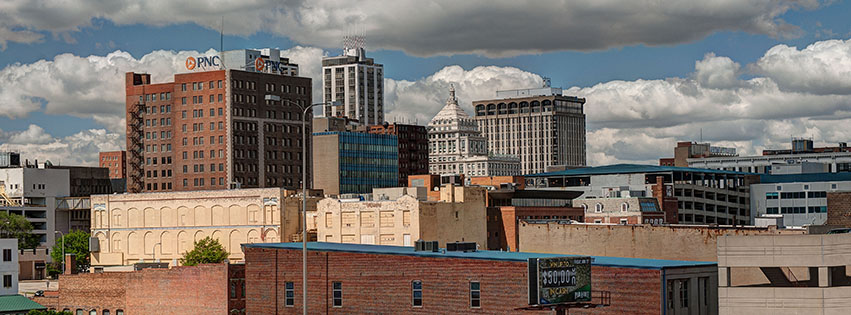
Our individual identities are important to making us the unique creatures we are. Our personal characteristics and features are so distinct that many of our differences are exposed. Joining these are social, cultural, religious, political and other affiliations; our status in terms of income, education and employment; and our city and neighborhood of residence.
Each of these defining aspects is bound to unite us in one way or another. Each is also bound to divide us. That is because we are all human beings with tendencies of prejudice and bias. Our first step toward healing is to acknowledge this natural fact. Respect for individual differences is essential to any relationship, workplace, social or community environment.
We should also be cognizant of our group identities and be aware that group conflicts are the most impactful and difficult to overcome. When we share group identities, they can act as a bridge. When we don’t, they can act as a wedge. This begins my call for diversity and inclusion at all levels of our local government, business and community organizations that play a key role in driving change for Peoria.
“Us” and “Them”
There is no question that Peoria is a diverse city, and the 2020 Census is expected to find it more racially and ethnically diverse than ever before. But diversity (D) must be accompanied by inclusion (I) in order to create a more harmonious and connected community. D & I are necessary partners in removing barriers, assuring equity and driving progress.
One of our group identities is that we are all Peorians. Anyone residing within the city limits of Peoria—as well as the greater metropolitan area—is a Peorian if they agree to this characterization. Despite our city’s challenges, it’s an identity and association of which I happen to be quite proud. Restoring pride in our city is important to our group image, our retention of residents and our growth potential.
Henri Tajfel was a social psychologist known for his work in social identity theory and prejudice. He contended that people often view their own with favor and outsiders with hostility and prejudice without just cause. Once we establish an “us” and “them” mentality, he surmised, we are on a course of differential treatment, group conflict and competition. The in-group often becomes exclusive, comfortable and resistant to change. I see this scenario play out in many of our existing structures where practically everyone shares the same race or ethnicity. The in-group shows no desire to change, and the out-group continues to beat on an unanswered door.
The ADKAR Model
To create a more inclusive community, Peoria could really benefit from a change management strategy. A few weeks ago, I participated in a workshop at Illinois Central College that introduced the ADKAR Model for change in business, government and community. The acronym is described as follows.
- A: Awareness for the need to change
- D: Desire to support the change
- K: Knowledge of how to change
- A: Ability to demonstrate skills and behaviors
- R: Reinforcement to make the change stick
I believe Peorians could utilize the ADKAR model to embrace and benefit from the city’s rich and growing diversity—that by following these progressive steps, Peorians could create greater awareness for the need to become an inclusive city, both socially and economically. ADKAR says we must have or create the desire to support the change. This step, according to the workshop consultant, can be the most difficult. If the desire is not there, you can generate all the awareness in the world, but the change is not likely to happen. Peorians must create an appetite for inclusion, a convincing case, a cost-benefit analysis and incentive. We must help people to see what’s in it for them.
More change management might occur if organizations expand their knowledge on how to make changes to become more inclusive. There are many resources, including yours truly, who are happy to assist these efforts. ADKAR indicates people must have the ability to demonstrate the new skills and behaviors and reinforcements to make them stick. This will mean Peorians holding other Peorians accountable for inclusion.
Engaging the Whole
Inclusive cities are intentional in addressing disparities which weaken the city as a whole. They engage people from all parts of their city in building prosperity and improving quality of life. Inclusive cities create affordable and non-discriminatory housing options, promote racial and cultural sensitivity, protect vulnerable communities, promote religious tolerance and build respect for difference. Inclusive cities establish policies that remove barriers for people with disabilities and provide access and opportunity for low-income citizens.
Inclusive cities invest in people by opening new opportunities for women, immigrants and people of color to enter the workforce earning family-sustaining wages. Recent local efforts include ICC’s new Workforce Equity Initiative, which targets individuals of poverty and African Americans for career training in healthcare, manufacturing and information technology. There are exciting, new employment training programs offered by the Tri-County Urban League, Elite’s Game Changers and Job Partnership’s ex-offender programs. The CEO Council’s Regional Workforce Alliance initiative also holds great promise for collective impact.
Building an inclusive city means making sure everyone is at the table. I believe the ADKAR model can help in that effort. PM
Rita Ali, PhD, is Vice President of Workforce, Diversity and Career Development at Illinois Central College and an at-large member of the Peoria City Council.
- Log in to post comments

